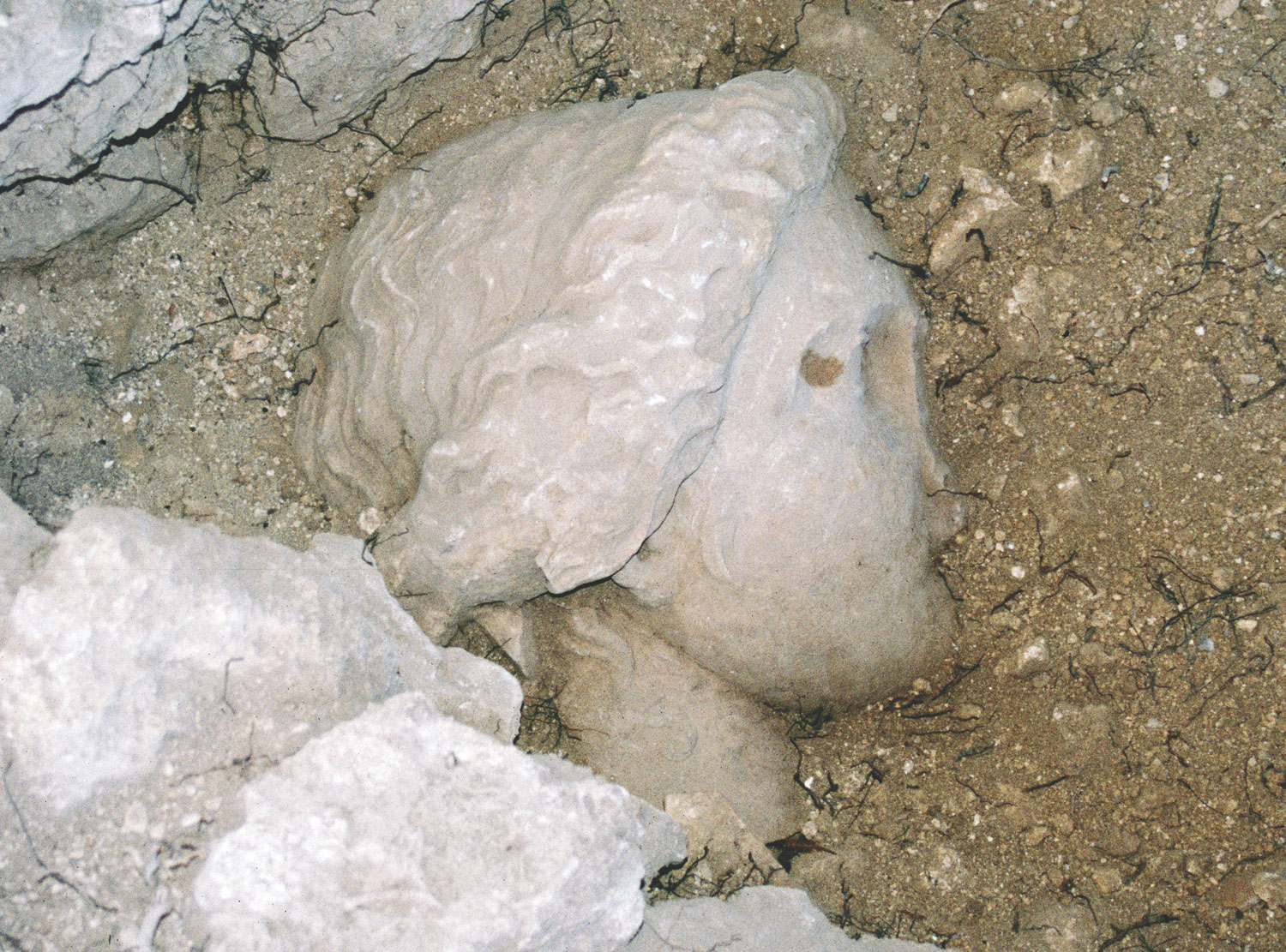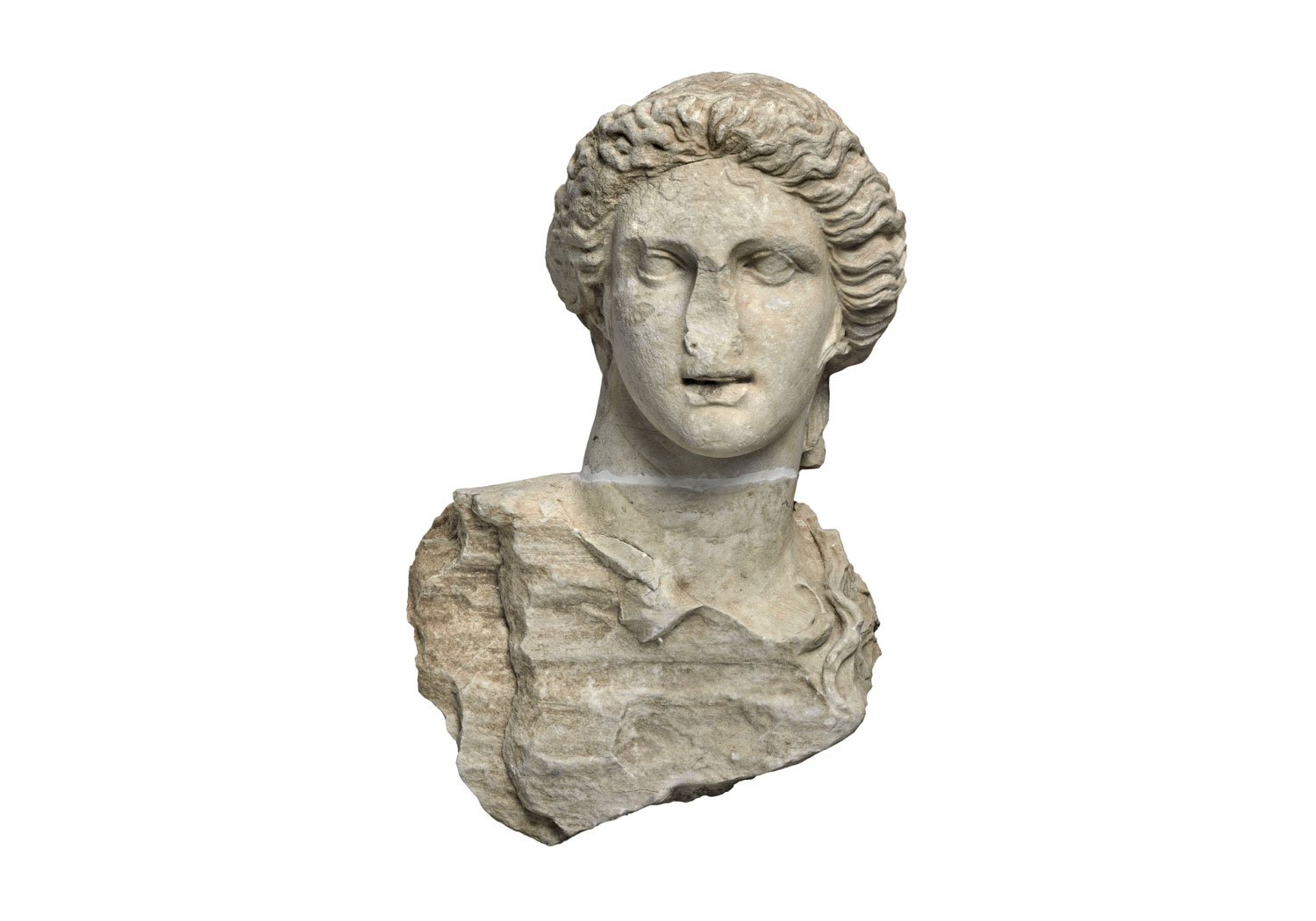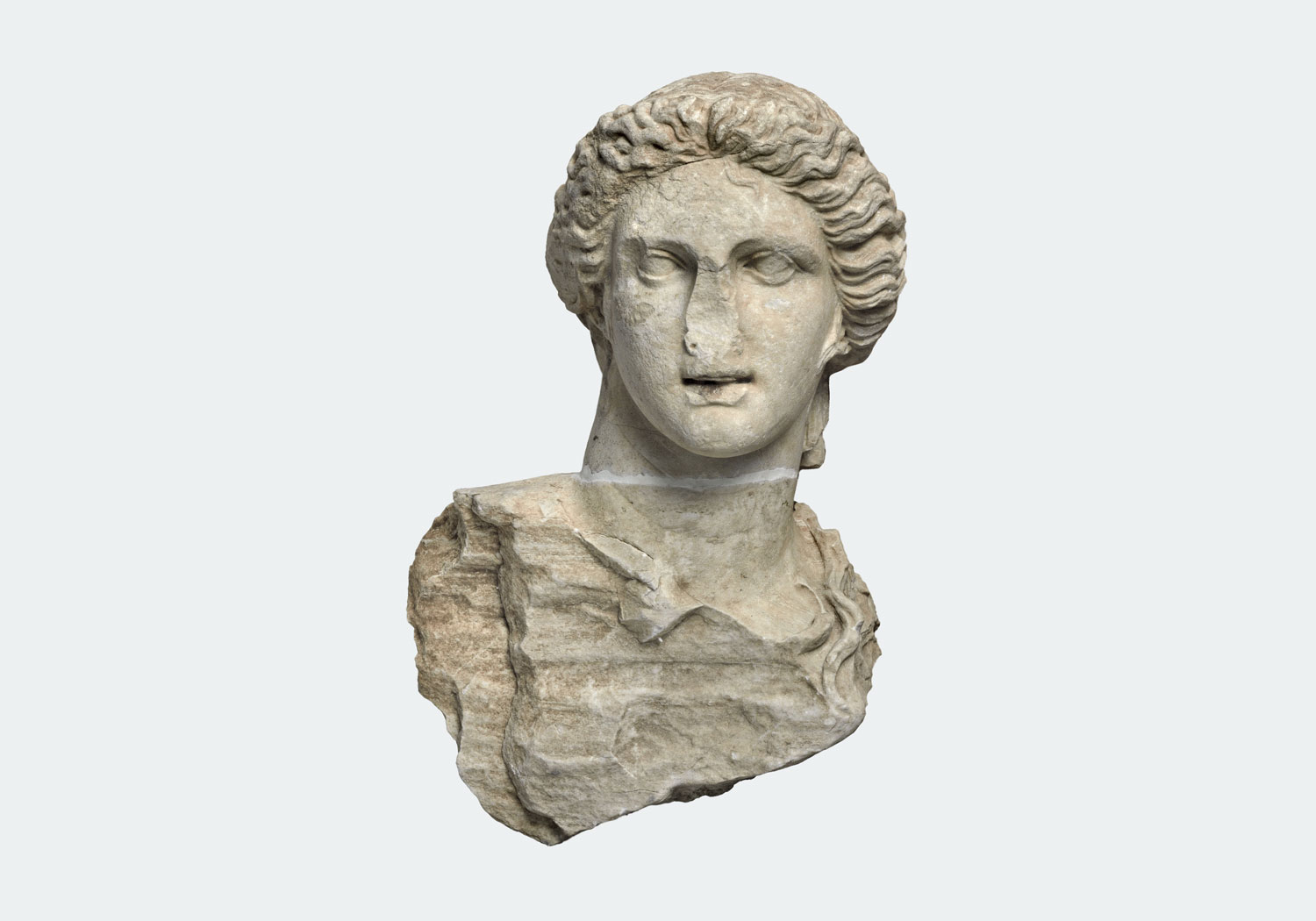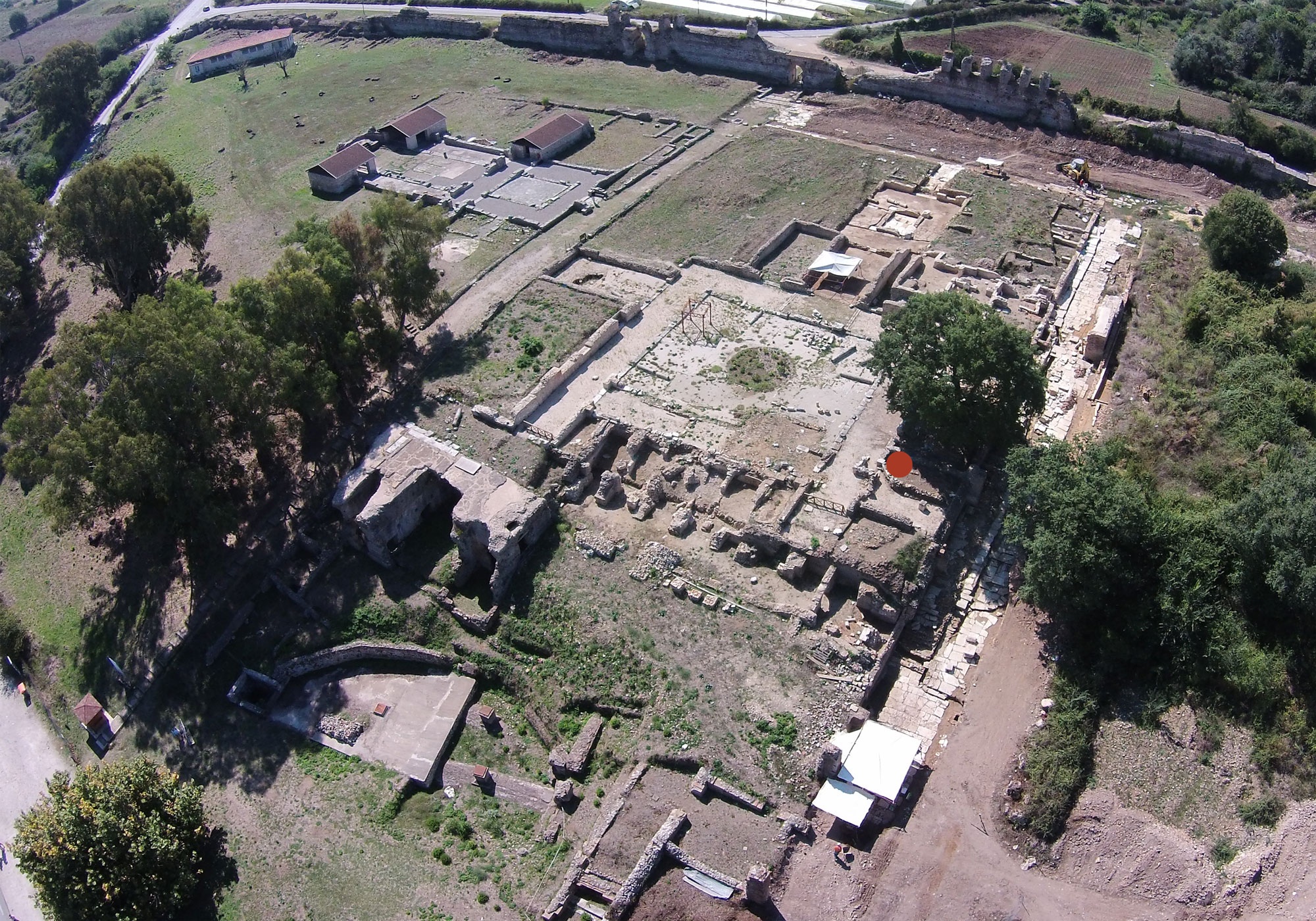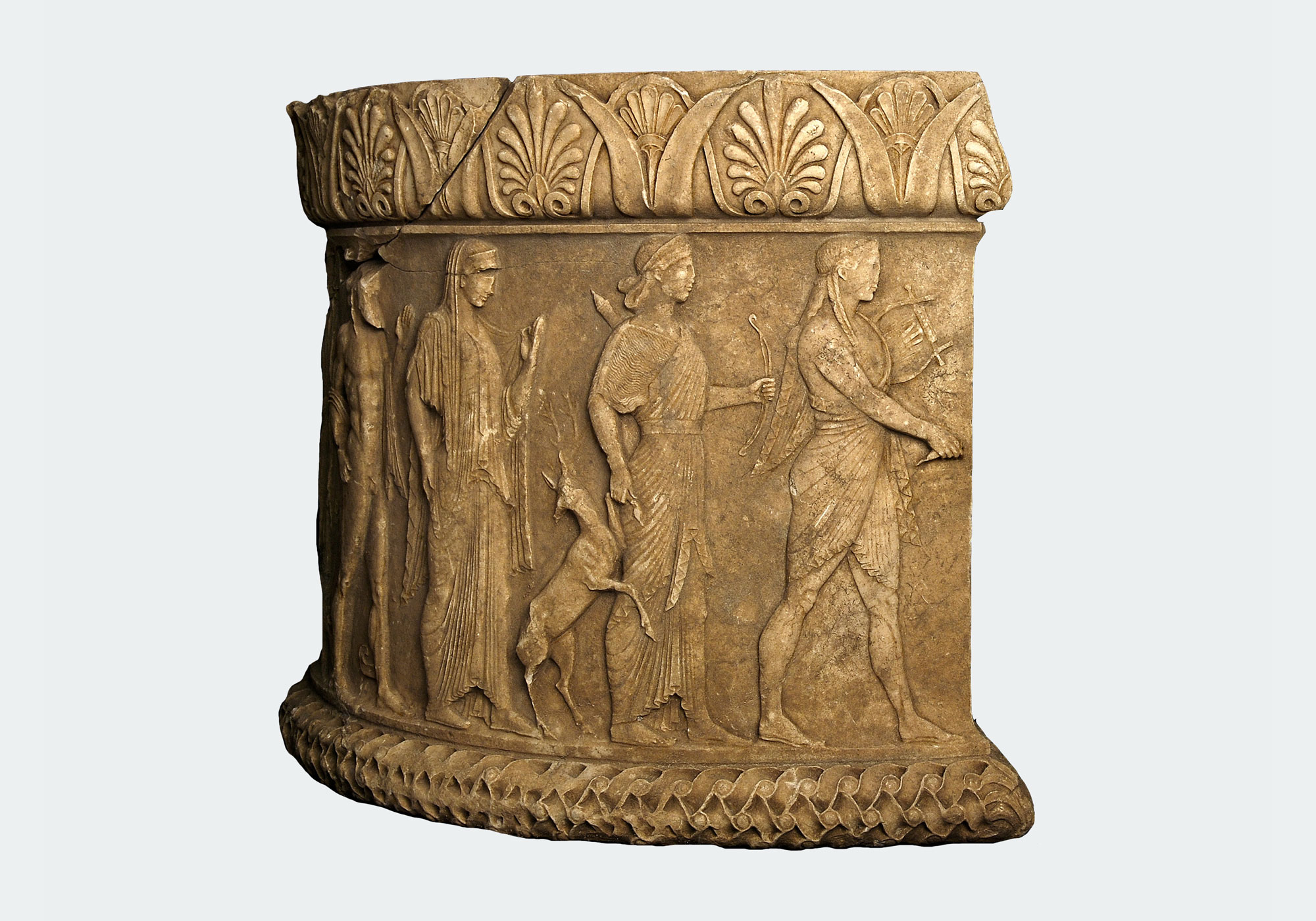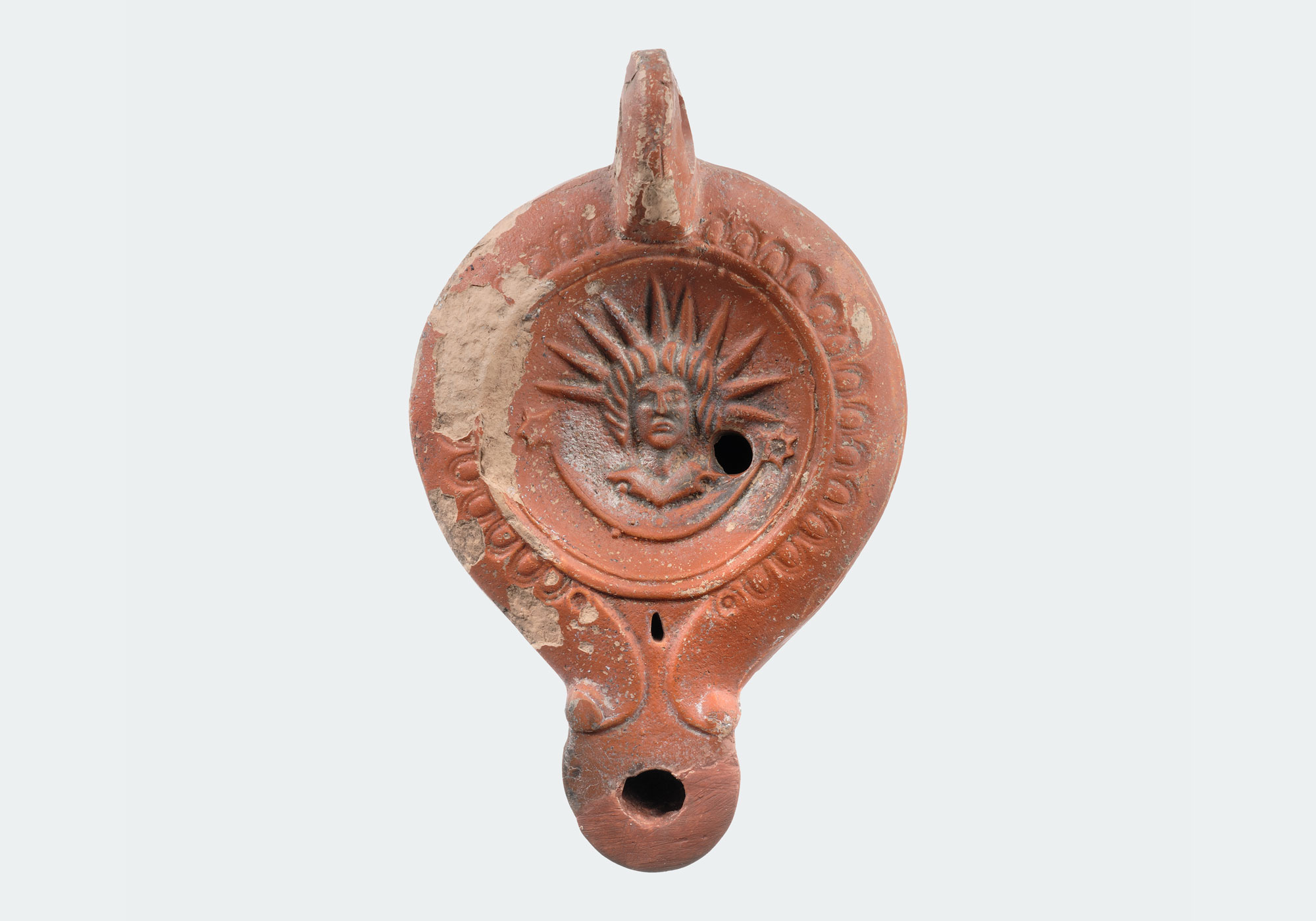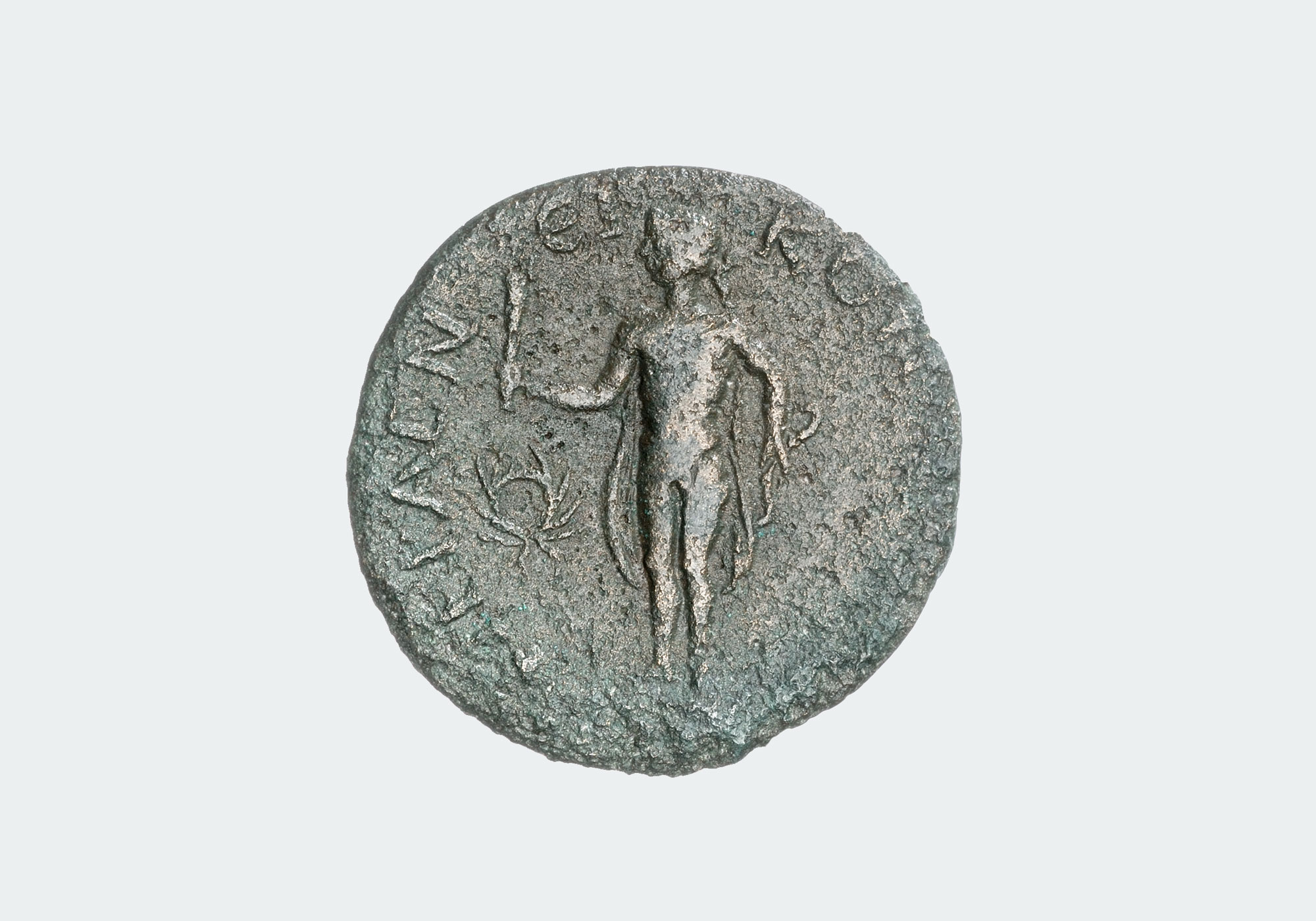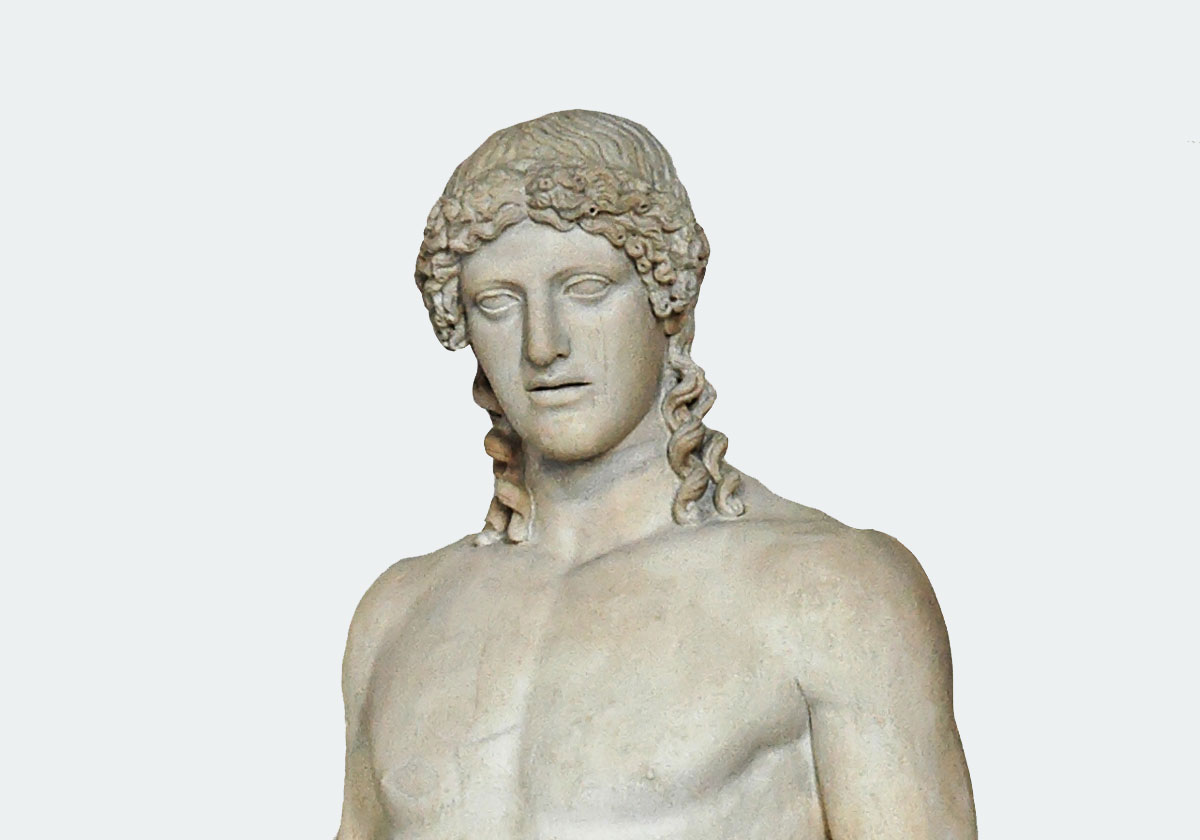18 May 2021
Apollo of Nicopolis
During the summer of 2008, an excavation was conducted at the “House of the ekdikos Georgios,” (a government official tasked with safeguarding the rights of the people against the abuse of authority), a lavish residence located in the northeastern area of Nicopolis.
In the west wing of this house, specifically in room number 16, a substantial marble head emerges, surrounded by a plethora of copper plates. Five years later, in 2013, further investigations unveiled the upper section of the marble torso, conclusively confirming its connection to the previously discovered head, belonging to the same statue.
The figure faces forward, with a slight inclination to the right and a corresponding tilt of the head in the same direction. The figure exhibits sizable, almond-shaped eyes, prominent cheeks, and a rounded chin. The lips are slightly parted. The ears are mostly concealed by the lengthy diadem, characterized by its undulating motifs that coil around a band, creating three elongated tendrils on both the left and right sides of the face.
The figure’s youthful look and flowing locks are indicative of its association with Apollo. It appears to replicate the sculptural archetype of Apollo Kassel, a type renowned through numerous replicas, named after the German city of Kassel, where the best-preserved example was unearthed.
The original, likely crafted in bronze, dates back to 470-460 BC and is attributed primarily to Pheidias, although other sculptors such as Myron, Pythagoras, Calamis, and Callimachus have also been linked to it.
In the original representation, the deity stands unclothed, with a slight turn to the left, holding a bow in his right hand, while his left hand is thought to grasp a small insect (locust) or a laurel branch. If indeed it was a locust, this would depict Apollo the Parnopion (the Locust God), a creation by Pheidias that Pausanias observed on the Acropolis (in his “Travels through Greece,” 1.24.8).
The cult of Apollo occupied a central position in Nicopolis. Apollo, alongside Poseidon and Ares, played a pivotal role in Octavian’s triumph at Actium.
To honor him, Octavian constructed an open-air sanctuary known as the “Victory Monument of Actium” and reinstated the Aktia, sacred games dedicated to Actius Apollo, in recognition of his instrumental role in the victory.
The god Apollo is also depicted on a marble altar discovered at the Victory site, leading a procession of deities and heroes. His image is frequently featured on copper coins minted in the city, as well as on clay lamps.


